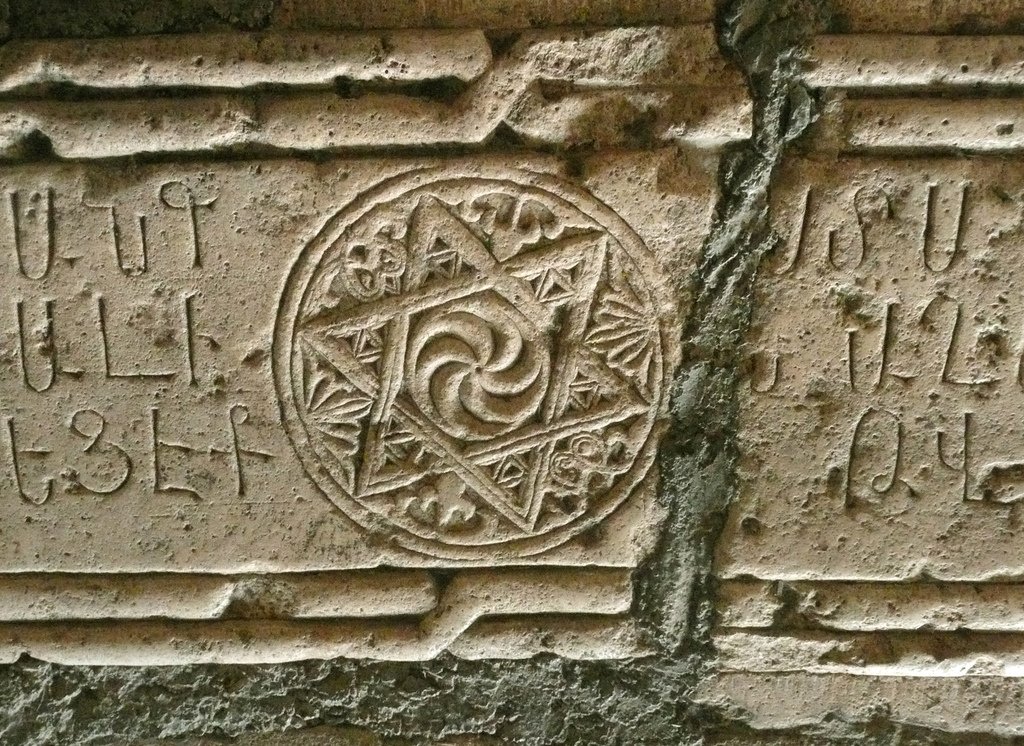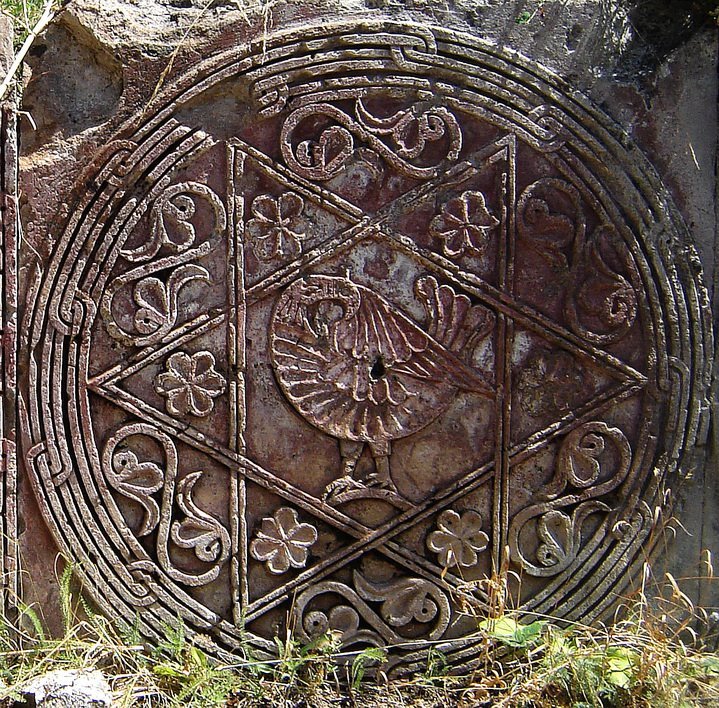Ancient Iconic Armenian Wheel Of Eternity Depicted Inside A Six Pointed Star
A. Sutherland - AncientPages.com - Armenian Wheel of Eternity is perhaps the most iconic among many ancient Armenian symbols. It is one of the country's most ancient and sacred symbols. Its origin is traced to the early observations of the sky and widely recognized worship of the Armenian Deity of the Sun.
It is also depicted in the emblem of the coat of arms of the country's ruling political party and serves as a decoration of the sacred Armenian alphabet.
In some cases, Armenians depicted the “Wheel of Eternity” inside a six-pointed star. The six-pointed star (hexagram) with the Jewish Star of David (Magen David), is also the modern symbol of Jewish identity and Judaism.
As one of the most common and sacred symbols of Armenian culture, the Wheel of Eternity originates from the worship of the sun and the sky. and the sun.
The Armenians - recognized for their skills as craftsmen, mathematicians, and architects - have used the hexagram for a very long time.
In Armenian architecture, the hexagram symbol has been used frequently. It was believed that the symbol had magical powers, which were widely incorporated in sacred art, astronomy, and architecture.
Left: Hexagrams on the walls of 13th Century Noravank monastery. source; Right: Hexagram symbol, Church of The Citadel Palace, Ani, Armenia. Image source.
One of the most famous examples of a hexagram in architecture can be found in the 12th century Armenian Church, the Cathedral of St. James in Jerusalem, where the hexagram-shaped arches support the dome.
Similar dome arches in the shape of a six-pointed star can be found in several other architectural solutions across the Armenian country.
This was not, however, the only architectural purpose for using this symbol.
A lot of Armenian churches have been built in the shape of a six-pointed star because according to ancient beliefs, the six-pointed star was considered a sacred decoration protecting the church like magic charms.
The oldest known depiction of a six-pointed star (dating back to the 3rd millennium BC.) was excavated in the Ashtarak burial mound in “Nerkin Naver” (in Armenia). This was confirmed by a series of radiocarbon analyses of artifacts, conducted in laboratories in Germany and in the USA.
The handle of a dagger depicts the world's earliest decoration of a six-pointed star buried in a burial mound containing over 500 graves.
The first and the most important Armenian Cathedral of Etchmiadzin (303 AD, build by the founder of Christianity in Armenia) is decorated with many types of ornamented hexagrams and so is the tomb of an Armenian prince of the Hasan-Jalalyan dynasty of Khachen (1214 A.D.) in the Gandzasar Church of Artsakh.
Written by – A. Sutherland - AncientPages.com Senior Staff Writer
Copyright © AncientPages.com All rights reserved. This material may not be published, broadcast, rewritten or redistributed in whole or part without the express written permission of AncientPages.com
Expand for referencesMore From Ancient Pages
-
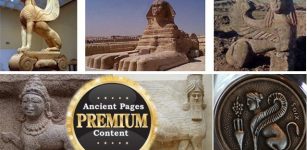 Mystery Of The Sphinx – A Guardian Of Knowledge And Symbol Of Riddles And Intrigue
Ancient Mysteries | Oct 13, 2015
Mystery Of The Sphinx – A Guardian Of Knowledge And Symbol Of Riddles And Intrigue
Ancient Mysteries | Oct 13, 2015 -
 Unravelling The Mystery Of Apollonius Of Tyana – Was He A Superhuman?
Ancient Mysteries | Sep 17, 2015
Unravelling The Mystery Of Apollonius Of Tyana – Was He A Superhuman?
Ancient Mysteries | Sep 17, 2015 -
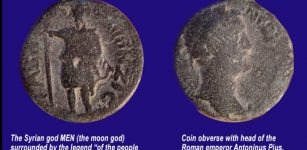 Unique 1800-Year-Old Roman Coin Unearthed On Southern Carmel
Artifacts | Mar 1, 2021
Unique 1800-Year-Old Roman Coin Unearthed On Southern Carmel
Artifacts | Mar 1, 2021 -
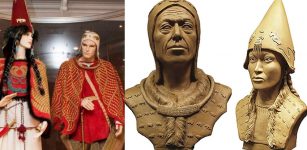 Stunning Facial Reconstruction Of ‘Siberian Tutankhamun’ And His ‘Queen’ Who Died 2,600 Years Ago
Archaeology | Jan 12, 2021
Stunning Facial Reconstruction Of ‘Siberian Tutankhamun’ And His ‘Queen’ Who Died 2,600 Years Ago
Archaeology | Jan 12, 2021 -
 7,000-Year-Old Grains Hints At Origin Of Swiss Pile Dwellings
Archaeology | Mar 3, 2022
7,000-Year-Old Grains Hints At Origin Of Swiss Pile Dwellings
Archaeology | Mar 3, 2022 -
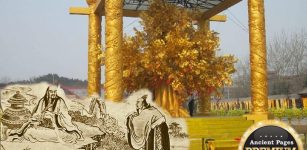 Unravelling The Mystery Of The Yellow Emperor And His Connection To Regulus
Chinese Mythology | Sep 21, 2015
Unravelling The Mystery Of The Yellow Emperor And His Connection To Regulus
Chinese Mythology | Sep 21, 2015 -
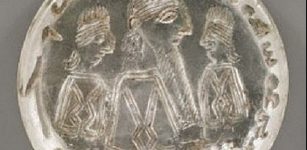 Mani: Apostle Of Light And His Ancient Rock Crystal Seal
Featured Stories | Jul 2, 2018
Mani: Apostle Of Light And His Ancient Rock Crystal Seal
Featured Stories | Jul 2, 2018 -
 Vercingetorix: Greatest Of All Gallic Leaders And Hero Of The French People
Featured Stories | Jun 24, 2020
Vercingetorix: Greatest Of All Gallic Leaders And Hero Of The French People
Featured Stories | Jun 24, 2020 -
 Astronomically Aligned Temples And Pyramids Of Ancient World
Featured Stories | Dec 10, 2021
Astronomically Aligned Temples And Pyramids Of Ancient World
Featured Stories | Dec 10, 2021 -
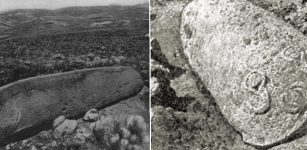 Mysterious 2000-Year-Old Carved Vishap Stone Monuments Of Armenia
Featured Stories | Dec 13, 2016
Mysterious 2000-Year-Old Carved Vishap Stone Monuments Of Armenia
Featured Stories | Dec 13, 2016 -
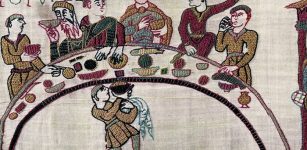 Bayeux Tapestry: Original Location Of Remarkable Romanesque Art – Finally Solved
Archaeology | Oct 26, 2019
Bayeux Tapestry: Original Location Of Remarkable Romanesque Art – Finally Solved
Archaeology | Oct 26, 2019 -
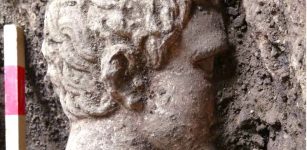 Incredibly Well-Preserved 2,000-Year-Old Statue Of Greek God Hermes Found In Heraclea Sintica, Bulgaria
Archaeology | Jul 12, 2024
Incredibly Well-Preserved 2,000-Year-Old Statue Of Greek God Hermes Found In Heraclea Sintica, Bulgaria
Archaeology | Jul 12, 2024 -
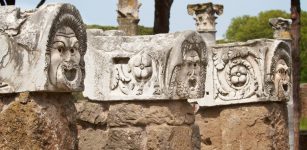 Ostia Antica – Unique Ancient Harbor City In The Suburbs Of Rome
Civilizations | Nov 29, 2018
Ostia Antica – Unique Ancient Harbor City In The Suburbs Of Rome
Civilizations | Nov 29, 2018 -
 Zagros Mountains: Home To Tribes, Kingdoms And Empires For Thousands Of Years
Civilizations | Sep 16, 2020
Zagros Mountains: Home To Tribes, Kingdoms And Empires For Thousands Of Years
Civilizations | Sep 16, 2020 -
 On This Day In History: He Wanted The Bible To Be Available To All – Burned At The Stake On Oct 6, 1536
News | Oct 6, 2016
On This Day In History: He Wanted The Bible To Be Available To All – Burned At The Stake On Oct 6, 1536
News | Oct 6, 2016 -
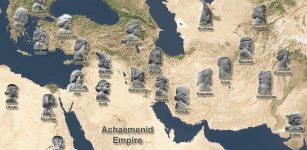 Achaemenid Empire Was The World’s Largest Ancient Empire
Ancient History Facts | Mar 26, 2016
Achaemenid Empire Was The World’s Largest Ancient Empire
Ancient History Facts | Mar 26, 2016 -
 Unsolved Enigma Of The Inga Stone And Its Mysterious Ancient Undeciphered Signs
Artifacts | Jan 18, 2015
Unsolved Enigma Of The Inga Stone And Its Mysterious Ancient Undeciphered Signs
Artifacts | Jan 18, 2015 -
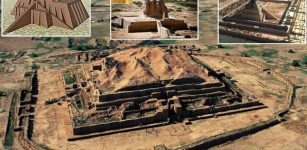 Ziggurats, Axis Mundi And Strong Connection To Religion In Mesopotamia
Featured Stories | Mar 17, 2021
Ziggurats, Axis Mundi And Strong Connection To Religion In Mesopotamia
Featured Stories | Mar 17, 2021 -
 Unique Viking Age Arm Ring Found On Öland And Stunning 2,000-Year-Old Gold Torc Discovered In Trollhättan, Sweden
Archaeology | Mar 19, 2025
Unique Viking Age Arm Ring Found On Öland And Stunning 2,000-Year-Old Gold Torc Discovered In Trollhättan, Sweden
Archaeology | Mar 19, 2025 -
 Skeleton Of An Ancient Roman Mercenary Buried With His Sword Discovered In South Wales
Archaeology | Apr 6, 2022
Skeleton Of An Ancient Roman Mercenary Buried With His Sword Discovered In South Wales
Archaeology | Apr 6, 2022

